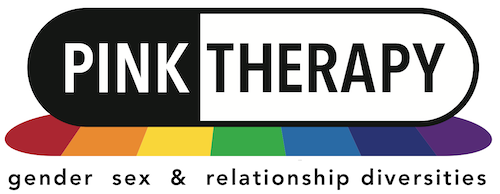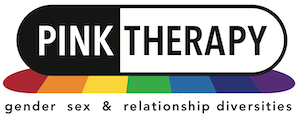
Replicated with permission from: Online Speech Pathology Programs
Research has shown that when a person’s voice doesn’t align with their gender identity, it can have a detrimental effect on their overall quality of life. This incongruence not only draws unwanted attention but can also jeopardize their safety.
Sometimes, the way we speak doesn’t quite match who we truly are. It’s like our voice is on a different page from our identity. That’s where voice and communication training steps in. Think of it as your personal voice coach, helping you align the way you sound with the real you. It’s all about bringing your voice and identity into harmony.
And get this, it’s not just for those who identify as transgender, non-binary, or gender nonconforming; it’s for anyone looking to bring their authentic voice to the forefront. So, if you’re looking to make your voice truly yours, you’re in the right place.
What is Gender-Affirming Verbal Communication?
Gender-affirming verbal communication refers to using language and speech patterns that align with a person’s gender identity and expression, particularly in the context of transgender and gender diverse individuals. This communication style is intended to validate and support an individual’s authentic self by ensuring that their voice, words, and non-verbal cues reflect their gender identity.
Some may seek to feminize, masculinize, or neutralize their voice and communication style to align with their gender identity. Others may focus on improving their vocal health, flexibility, or confidence. For some, this can provide a platform to explore different facets of their gender expression through their voice and communication.
It can involve modifying vocal characteristics such as pitch, resonance, and intonation and adopting language and communication patterns that resonate with the person’s self-identified gender.
Why is it important?
Gender-affirming verbal communication is uniquely important for the well-being and self-expression of transgender and gender-diverse individuals:
- Validation of Identity: Using gender-affirming language and communication patterns validates an individual’s gender identity. It acknowledges and respects their self-identified gender, which is essential for their mental and emotional well-being.
- Reduction of Dysphoria: For many transgender and gender-diverse individuals, incongruence between their voice and gender identity can lead to gender dysphoria—a deep sense of discomfort.
- Improved Mental Health: Authentic and gender-affirming communication fosters a sense of belonging and acceptance, reducing feelings of isolation and depression. It can enhance self-esteem and overall mental health.
- Authenticity and Self-Expression: It allows individuals to express their unique gender identity authentically, reinforcing their sense of self and allowing them to be true to who they are.
- Safety and Respect: It fosters a safer environment where individuals are respected and acknowledged for who they are. This, in turn, reduces the potential for negative reactions or discrimination.
- Inclusivity and Acceptance: Promoting gender-affirming communication contributes to a more inclusive society where everyone is respected and included, regardless of their gender identity.
Understanding Your Current Verbal Communication
In this section, we’ll focus on a key step in your journey toward gender-affirming verbal communication: understanding your current speaking style. We’ll look at how societal norms have impacted the way you talk and find areas where you can make improvements for more genuine and confident expression.
Self-Assessment: Where Are You Now?
For individuals in the LGBTQIA+ community, embracing your authentic voice can be a deeply personal and empowering experience. To get started:
- Record Your Speech: Record yourself speaking in various situations. This could be in conversations with friends, family, or when you’re presenting at work or in social settings.
- Reflect on Your Comfort Level: How comfortable do you feel when you speak? Do you find yourself censoring your words or holding back in certain situations?
- Identify Discomfort or Dysphoria: Note instances where you may feel discomfort, dysphoria, or incongruence between your true self and your verbal communication.
- Consider Feedback: If you’re comfortable doing so, ask trusted friends or family for feedback on your speech. What do they notice about your communication style?
Identifying Areas for Improvement
Now, let’s focus on pinpointing areas in which you’d like to improve your verbal communication to make it more gender-affirming:
- Pitch and Resonance: Consider your pitch – the highness or lowness of your voice. Are there specific aspects of your pitch you’d like to adjust to better reflect your gender identity?
- Speech Patterns and Rhythm: Explore your speech patterns. Do you notice any habits, such as speaking too fast or too slowly, that you’d like to modify in order to better express yourself?
- Vocabulary and Language Choices: Pay attention to the words you use. Are there terms or expressions that feel more authentic to your identity within the LGBTQIA+ community?
- Non-Verbal Communication: Non-verbal cues, like body language and facial expressions, play a part in communication. Do you have any non-verbal cues in mind you’d like to adapt to convey your true self more effectively?
Exploring Your True Voice
Moving forward, let’s talk about discovering your true voice within the LGBTQ+ community. It’s about understanding who you are, how you express your gender, and finding the confidence to be authentic.
Self-Discovery: Getting to Know You
- Keep a Journal: Start writing down your thoughts and feelings in a notebook or on your computer. This is a private space where you can express yourself honestly. It’s a way to reflect on your emotions and experiences, which can help you better understand yourself.
- Take Time to Reflect: Find moments to sit quietly and think. You don’t need any special tools—just your thoughts. These moments of reflection can help you understand your feelings and experiences and how they relate to your gender identity and your way of speaking.
- Lean on Others: Reach out to LGBTQ+ friends, mentors, or join support groups. They’re there to provide guidance, share their own journeys, and lend a listening ear. Connecting with people who understand your experiences can be incredibly reassuring.
- Celebrate Progress: Every step you take in your self-discovery journey is worth celebrating. It could be something as small as expressing your thoughts openly or using a pronoun that resonates with you
Gender Expression and Identity: Embracing Who You Are
- Define Your Identity: Take some time to think about what your gender means to you. What words or pronouns make you feel most like yourself? This is about discovering and defining your unique gender identity.
- Dress and Act Authentically: Be true to yourself. Choose clothing, behaviors, and a communication style that align with your gender identity. It’s all about being comfortable and authentic.
- Look for Role Models: Search for LGBTQ+ individuals who openly express their unique gender identities.
- Connect with Your Community: Engage with the LGBTQ+ community. Talking with people who share similar experiences can provide support and insight. You’ll find a network of understanding and empathy within the community.
Authenticity and Confidence: Being Proud of Who You Are
- Embrace Imperfection: It’s important to know that no one is perfect, and that’s okay. Accept that you might make mistakes or have moments of self-doubt. Authenticity comes from embracing your unique journey, flaws and all.
- Positive Self-Talk: Boost your confidence by using positive self-affirmations. Remind yourself daily that you are valuable and that your voice matters in the LGBTQ+ community.
- Step Out of Your Comfort Zone: Challenge yourself with new experiences. Try speaking in public, participating in LGBTQ+ events, or engaging in discussions. Pushing your boundaries gradually helps build your self-assurance.
- Build a Supportive Network: Surround yourself with friends and allies who accept you for who you are. Having a strong support system is like having a safety net. They’ll encourage you to be confident and authentic.
Step-by-Step Guide to Gender-Affirming Verbal Communication
For those who are navigating the path of gender identity, the way you communicate can be a powerful tool in expressing yourself.
This step-by-step guide is a roadmap to help you through this process. Whether you identify as transgender, non-binary, or simply want to refine your communication style, this guide is here to support you.
Step 1: Discovering Your Pitch
Start by humming at various pitches, both higher and lower. Pay attention to which pitch feels most comfortable and affirms your gender identity. Make it a habit to dedicate a few minutes each day to speak in your chosen pitch. It could be while reading, singing, or even reciting your grocery list. The key is consistent practice.
- Pitch Slides: Begin with your natural pitch and gradually slide your voice up and down the pitch scale. This exercise helps you explore your vocal range and find the pitch that feels most comfortable and authentic.
- Siren Sounds: Practice siren sounds by transitioning from a low to a high pitch and back.
- Resonance Practice: Experiment with resonating your voice in different parts of your body. Try speaking from your chest for a lower pitch or from your head for a higher pitch. This allows you to fine-tune your resonance.
Step 2: Mastering Breath Control
Begin your day with deep breathing exercises to control your breath. Inhale deeply through your nose, exhale slowly through your mouth, and incorporate this controlled breathing into your daily life.
- Humming Warm-Up: Humming is a simple yet effective exercise. Start by humming at your natural pitch, then gradually transition to your desired pitch range. This warms up your voice and eases tension.
- Neck and Shoulder Relaxation: Gently stretch and massage your neck and shoulders. Tension in these areas can affect your voice. Loosening them up can make it easier to control your pitch and resonance.
Step 4: Perfecting Your Articulation
Select a book, article, or even a favorite poem and read it aloud. Focus on clear pronunciation, ensuring that each word and syllable is enunciated distinctly.
- Tongue Twisters: Work on clear pronunciation with tongue twisters. Start with easy ones and progress to more challenging ones.
- Read Aloud: Choose texts or articles that reflect your interests and values. Read them aloud while focusing on clear articulation and pronunciation. This exercise allows you to practice language choices that align with your identity.
Step 5: Modeling Your Ideal Speech
Choose someone whose speech you admire and pay close attention to their patterns. Try to mimic their rhythm, intonation, and pacing. Practice these patterns until they become natural for you.
- Speech Pattern Analysis: Listen to different speakers within the LGBTQ+ community or others whose communication style you admire. Analyze their speech patterns, rhythm, and intonation.
Step 6: Affirmations for Self-Belief
Incorporate daily affirmations into your routine to boost confidence in your LGBTQ+ identity. Remind yourself that your voice is valid and authentic, cultivating self-belief in your ability to communicate as your true LGBTQ+ self.
Step 7: Expanding Your Vocabulary and Expressiveness
Begin incorporating new words and expressions that align with your identity into your conversations. Gradually build a vocabulary that feels empowering and authentic to you.
Step 8: Feedback for Progress
Regularly engage with LGBTQ+ friends, mentors, or professionals for feedback. Ask specific questions, like “How does my pitch align with my LGBTQ+ identity?” Use their insights to make gradual improvements with the support of your community.
Final Thoughts
No matter our gender identity, how we communicate is a deeply personal and distinctive way of expressing ourselves to others. Our voice and communication style mirror our identity just as much as our physical appearance and how we present ourselves visually.
Consequently, regardless of where an individual stands in their personal journey of self-expression, feeling that their voice or communication doesn’t truly represent them can be disorienting and make them feel isolated.
Support and Resources
Whether it’s finding a supportive speech therapist, joining online communities, or checking out recommended readings, we’ve got you covered. These resources are here to help you feel empowered, guiding you to find and embrace your true voice.
Online Communities
Connecting with others who share similar experiences can be a tremendous source of support. Online communities offer a safe and welcoming space to exchange thoughts, ask questions, and share experiences. These spaces are vital for mutual understanding and growth. Look for:
- LGBTQIA+ Support Networks: There are various online communities specifically dedicated to LGBTQIA+ individuals seeking gender-affirming voice communication. You can join platforms like Reddit’s LGBTQ+ subreddits, Facebook groups, or specialized forums.
- Safe Spaces for Sharing Experiences: These platforms allow you to discuss your journey openly and receive invaluable insights and advice from those who’ve been through similar experiences. Remember to respect the privacy and boundaries of others in these spaces.
Books and Literature
- The Voice Book for Trans and Non-Binary People” by Matthew Mills and Gillie Stoneham: This book provides practical advice and exercises for individuals looking to modify their voices to better align with their gender identity. It covers topics like pitch, resonance, and speech patterns.
- Trans Bodies, Trans Selves” edited by Laura Erickson-Schroth: While not solely focused on voice, this comprehensive resource offers information on various aspects of transgender and non-binary health, including communication and language.
- You and Your Gender Identity: A Guide to Discovery” by Dara Hoffman-Fox: This book explores various facets of gender identity, including communication. It can be valuable for those looking to understand the connection between identity and voice.
- The Gendered Brain by Gina Rippon: Although not a voice training guide, this book delves into the science and myths surrounding gender differences, which can be enlightening for individuals exploring their gender identity and expression.
Professional Contacts and Supportive Services
- World Professional Association for Transgender Health (WPATH): WPATH is a professional organization that provides guidance and sets standards for the medical and psychological care of transgender and gender-diverse individuals. It offers guidelines for healthcare professionals on best practices for gender-affirming care, including hormone therapy and surgical interventions.
- Voice and Speech Trainers of America (VASTA): VASTA, located in Washington State, is an organization of voice and speech professionals dedicated to the study and teaching of vocal and speech-related skills. While not specific to transgender issues, some VASTA members may specialize in voice training for individuals seeking gender-affirming vocal changes.
- GLAAD Tips for Allies of Transgender People: Founded in New York, GLAAD is an LGBTQ+ media advocacy organization. Their “Tips for Allies of Transgender People” is a resource that offers guidance to friends, family, and allies of transgender individuals on how to be supportive and understanding.
- GLAAD Transgender Resources: GLAAD provides a wide range of resources related to transgender issues, including terminology guides, media reference sheets, and information on transgender representation in the media. These resources aim to improve the portrayal and understanding of transgender people in the media.
- GLSEN: GLSEN, or the Gay, Lesbian & Straight Education Network, is an organization focused on promoting safe and inclusive environments for LGBTQ+ students in K-12 schools. While not exclusively related to transgender issues, they work to create inclusive spaces for all LGBTQ+ students, including those who are transgender.
- National Center for Transgender Equality: This is a D.C.-based advocacy organization dedicated to advancing the rights of transgender individuals. They work on issues such as healthcare access, legal protections, and public policy to improve the lives of transgender people.
International LGBTQIA+ Resources
- It Gets Better Canada – A comprehensive list of resources for the LGBTQ+ community in Canada including local links and crisis hotlines per province.
- Switchboard – Switchboard provides information, support, and referral services for the LGBTQ+ community in the UK – and anyone considering issues around their sexuality and/or gender identity.
- QLife – QLife is a free and anonymous initiative operated by individuals within the LGBTIQ+ community to offer nationwide peer support and referral services through telephone and/or webchat for LGBTIQ+ individuals in Australia.

